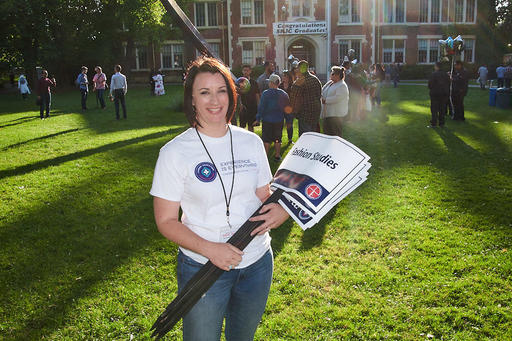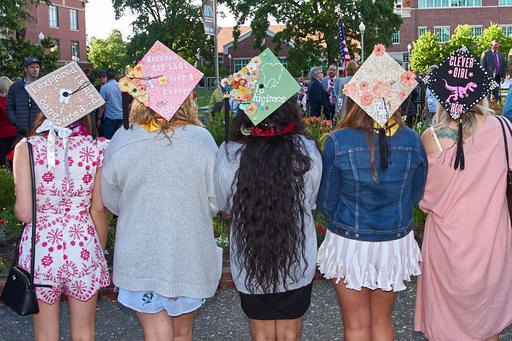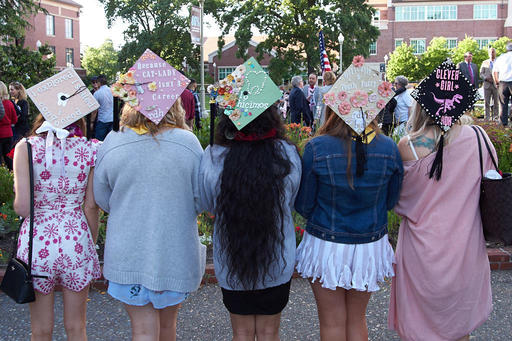It's graduation season, and I've covered a ton of ceremonies as part of my work with Santa Rosa Junior College. Lighting conditions were all over the map, and I had to prepare for anything. So I kept a flash mounted on the camera, just in case.
 Fill flash used in strong backlighting. Photo by Derrick Story.
Fill flash used in strong backlighting. Photo by Derrick Story.
One of the times that I turn the flash on is when I'm in a strong backlighting situation. I could just expose for the face without a flash, but then the entire background blows out. And for many of these images, the location is important as well. If you graduate from SRJC, you probably want to see the setting as well as the subject. Fill flash is a quick solution to that challenge. You can balance both elements in a single frame. (Plus it allows you to take advantage of rim lighting for the hair.)
On the edges of the day, flash also makes the colors more vibrant. That pop of light really highlights the detail as well.
 Colorful caps and happy grads with fill flash.
Colorful caps and happy grads with fill flash.
 Existing light only, no flash for this version. Photos by Derrick Story.
Existing light only, no flash for this version. Photos by Derrick Story.
Sometimes, I will shoot a quick portrait both ways - with and without flash - then choose my favorite later in post. I would love to tell you that I always choose one version over the other. But that just isn't the case. It could go either way.
The one thing that I do know is that some shots are saved by fill flash. And those are the times that I'm really happy to have that option.
Many photographers don't consider fill at all. I think, like many tools for the working pro or serious amateur, that supplemental lighting is an option to consider when covering events. And my advice is to learn and be ready to tap that technique if needed. It just takes one wonderful image to make the effort worthwhile.
You can share your thoughts at the TDS Facebook page, where I'll post this story for discussion.











